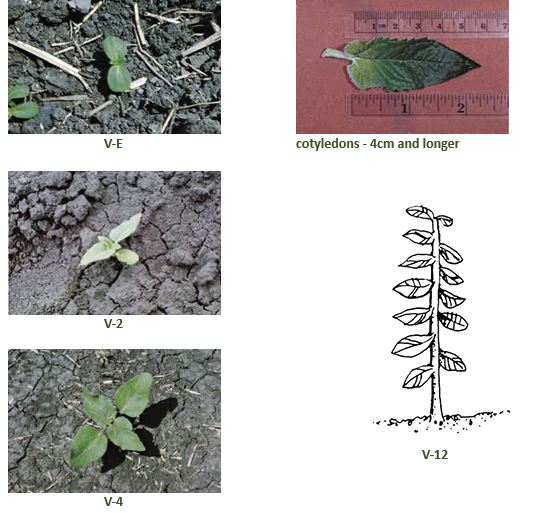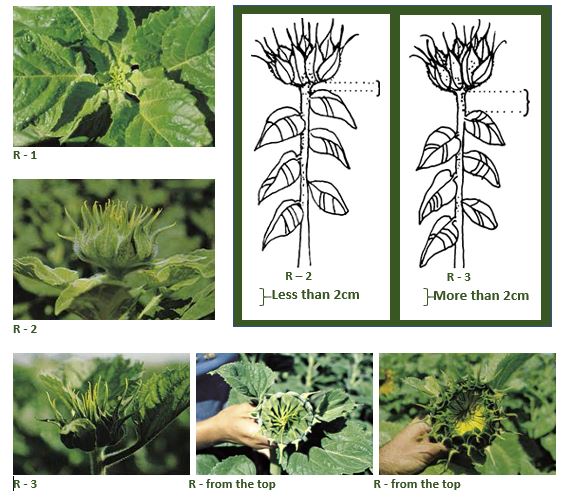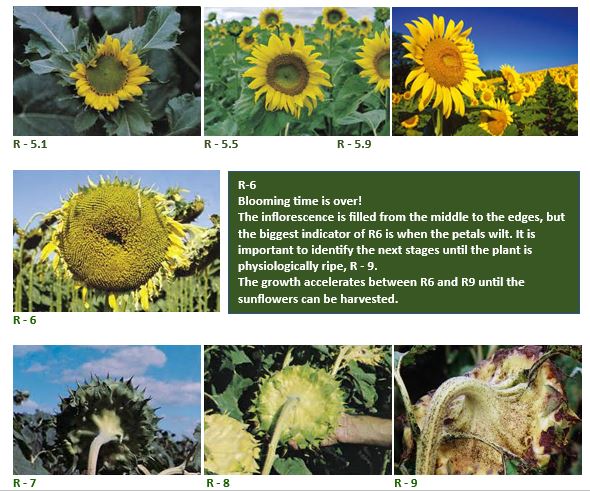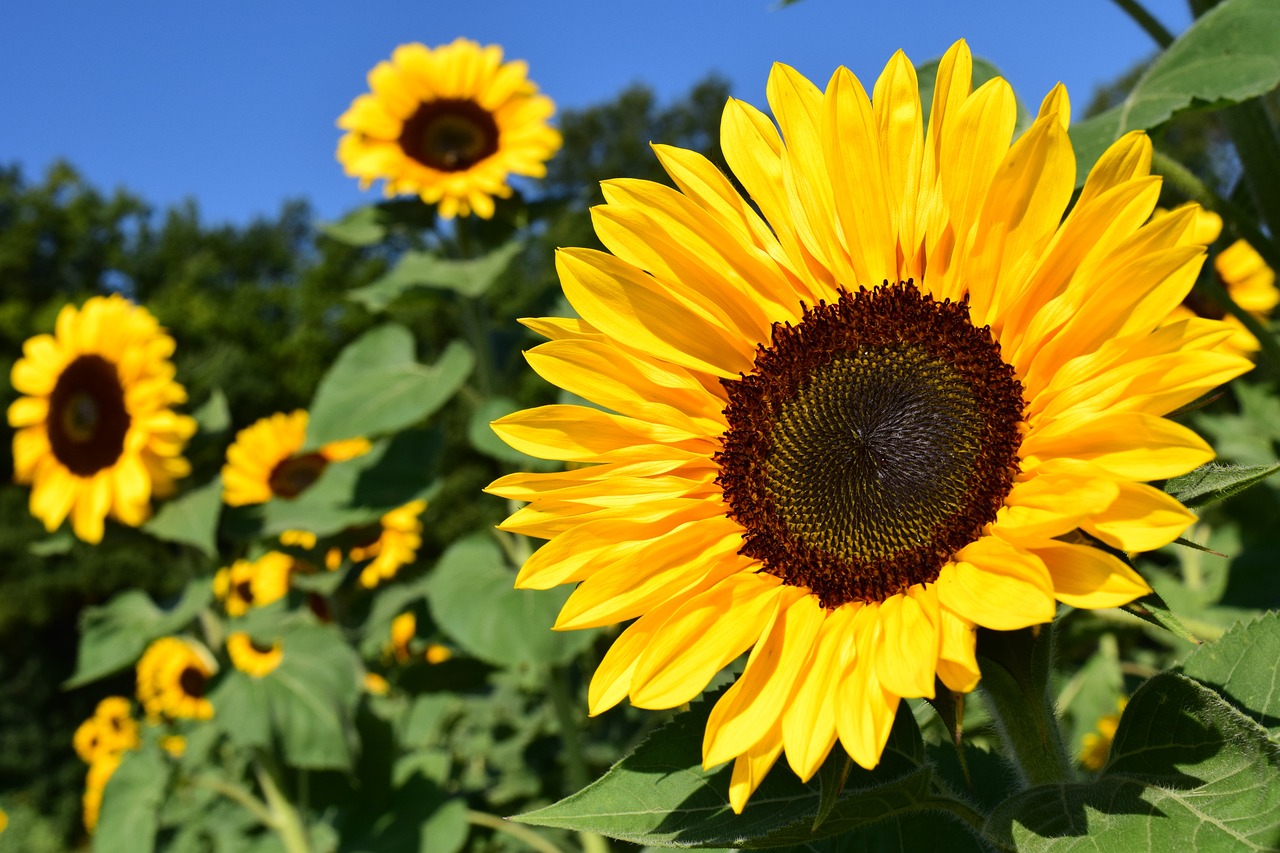The overall growth and development of sunflowers as well as structure and timelapse between their growth stages are determined by the interaction between the genetic background of the plant and seasonal environmental factors.
To determine the growth stage of your field, it is important to evaluate a large number of plants which is widespread across the field. When it comes to identifying reproductive growth stages by looking at the inflorescence (working with a three-way cross type plant) a well-represented evaluation of the field is key. When evaluations are done on the inflorescence between the R7 to R9 growth stages, ensure that healthy and developed flowerheads are evaluated.
Vegetative growth stages

Sprouting V – E
- Seedlings have sprouted and the leaf closest to the seed pellets is less than 4cm long.
Vegetative stage V
- The vegetative stages are determined through the amount of cotyledon (seed leaves), these are leaves that are at least 4cm long, V1, V2, V3 etc.
- If the first leaves are no longer visible at the bottom of the stem, you can count the nodes (excluding the nodes of the seed lobes)
- V – 1, V – 2, V – 3
Reproductive growth stages


Reproductive growth stages R – 1 to R – 9
R -1 A small flower bud grows at the end of the stem and later florets. From the top, these florets may look like multiple stars on top of each other.
R – 2 The immature flower bud keeps growing and the nearest (tallest) leaf on the stem is about 2cm from the flower bud. This star stage is usually R1 and/or R2.
R – 3 The immature flower bud now extends to more than 2cm from the nearest (tallest ) leaf on the stem. You can ignore the leaves developing directly behind the inflorescence.
R – 4 The blossom starts to open up. From the top light-yellow immature petals can be seen in the middle of the flower.
R – 5 The start of the flower formation. This stage can be broken up into different stages, 5,1 to 5,9, depending on how far the inflorescence has developed and filled up.
From the outside inward: 5,4 indicates that the flower is 40% developed and 5,7 indicates that the flower is 70% developed. Saying a flower is 50% developed is not the same term used to describe the growth phase shown in 5,5. Since the flowers start blooming 50% is an indication that 50% of the flowers have a yellow hue or yellow petals.
R – 6 The flowering stage is complete and the yellow petals start wilting.
R – 7 The back of the inflorescence starts turning yellow. This remains yellow while the bracts (flower blades) are still dark green. Overall, it is still predominantly green at the back of the inflorescence with just a light-yellow tint.
R – 8 The back of the inflorescence is bright and distinctly yellow, while the blades (bracts) are still green.
R – 9 The blades (bracts) completely turn yellow with brown blotches. Sometimes the blades (bracts) remain green. The plant is however only physiologically ripe when the blades (bracts) have turned yellow, R – 9. It is not necessary to wait for the back of the inflorescence to turn brown as well.
Many of the full-season, growth-length hybrids’ flowers are already physiologically ripe, but the stems are still dark green. These plants are already physiologically ripe and the inflorescence will dry out long before the stems. Some of the medium-growing season hybrids’ stems and inflorescence dry out simultaneously. At this stage, harvesting should take place timely, or the farmer will lose mass.
Sources: Schneiter, A.A., NDSU Professor. Miller, J.F., USDA – ARS. Berglund, D.R. emeritus NDSU extension agronomist
“Sow a seed today and reap a harvest of abundance tomorrow,” Philip Fourie, October 2023
For more information, go to www.pioneer.com/za or send an e-mail to info.rsa@pioneer.com









